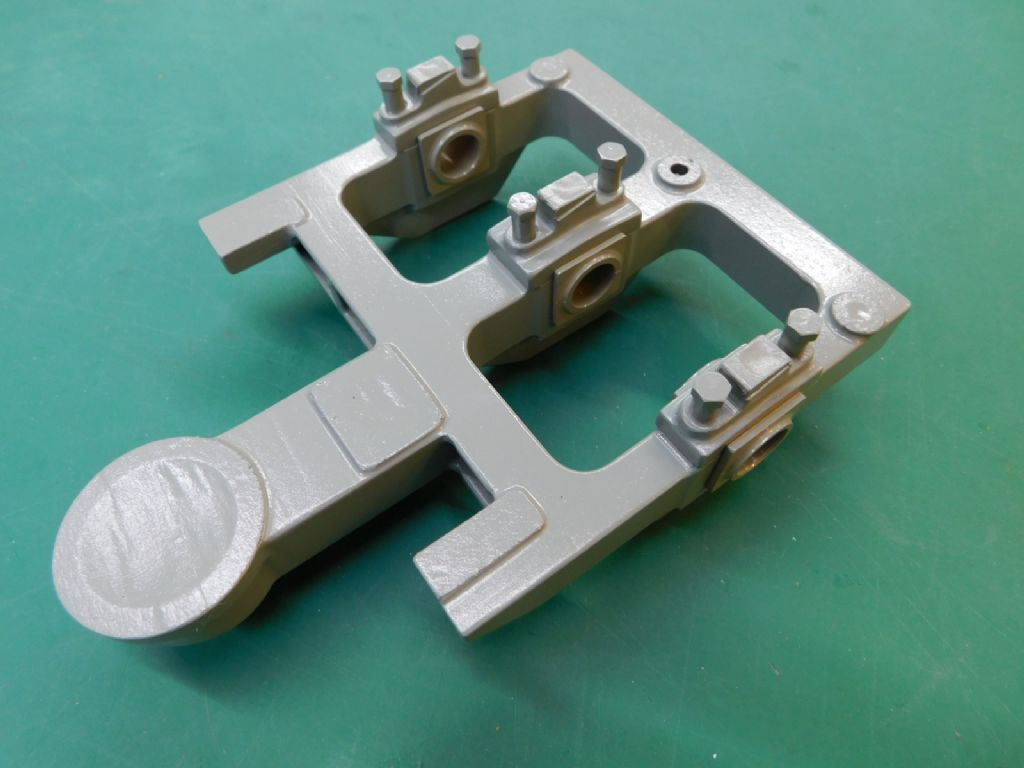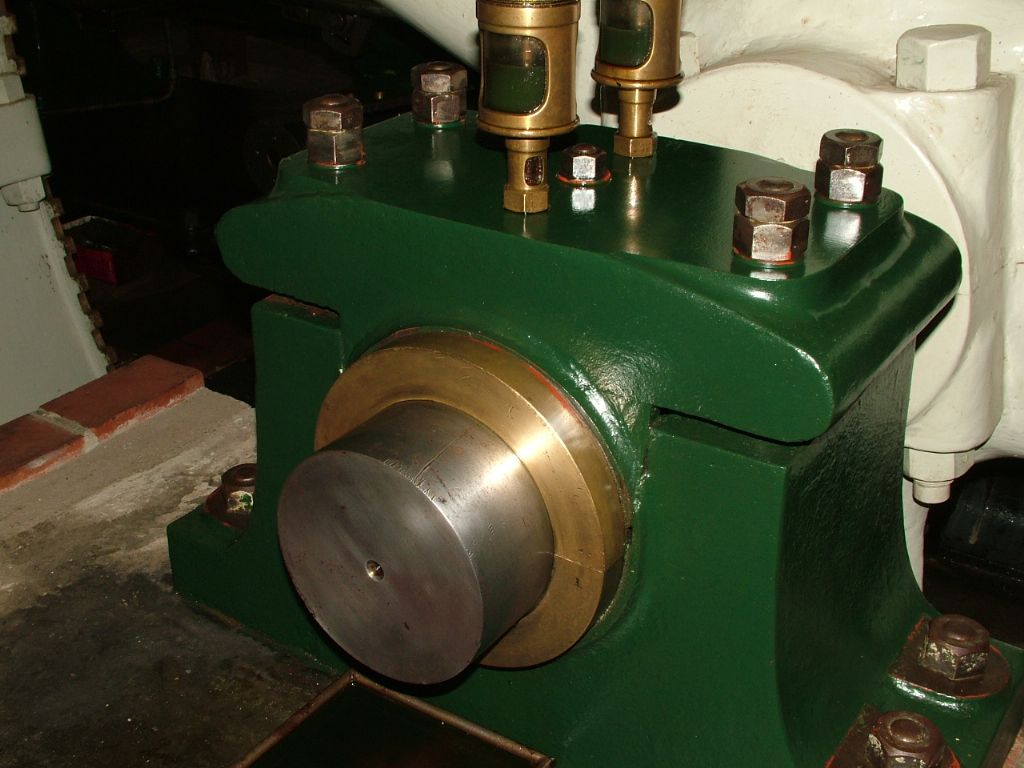Some thoughts
The over hang is too long
The centre, however gently applied, will act as a wedge applying a separating pressure on the weakest point – the soldered faces. The act of turning the groove will apply more pressure on the joint too.
Once the OD is turned the 'clamp' of the bearing pedestal needs to be tight otherwise the drilling will apply more pressure to the now very narrow soldered faces
Parting off is likely to be a nightmare. with the 'clamp' in place.
Some further thoughts
Cut off enough to make one bearing (twice)
Hold in mill vise with soldered faces clamped, face, drill and bore. If no boring head drill to within .5mm on diameter and return to lathe in four jaw. Bore to size. Much easier to centralise part on mill than four jaw with the outside surfaces known to be parallel to the split line.
Make simple mandrel with very slight taper that bearing pushes on and very gently face each end true to bore.
Make parallel mandrel and clamp washer and clamp firmly on mandrel to turn OD to finish size.
If the soldering was efficient the bearing can then be held on an expanding mandrel to turn to finish width and any steps etc possibly required on each end.
As always, your choice of course, but having been down the route before without success I'd seriously not be thinking of repeating the exercise.The above will give the certainty of accuracy, with the least stress on the split line but then – what would I know 
Good luck with it Doc
Just seen your last post. Easily rectified in the mill op
Edited By Ramon Wilson on 09/03/2023 08:00:03
 JasonB.
JasonB.
























